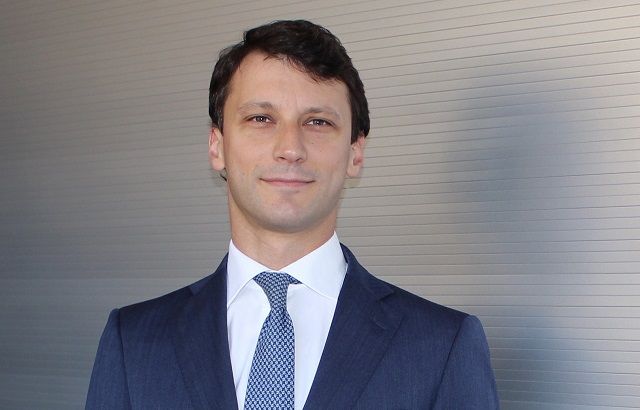One of Giuseppe Patara’s first roles at Credit Suisse in the mid-2000s was on the multi-asset team in Singapore. It was boom time. Free-spending clients demanded double-digit returns and the mantra was high risk equals high returns.
The tornado that was the global financial crisis upended everything. Like many multinational groups, Credit Suisse has undergone structural reforms during the past decade. Its asset management arm was merged with its private banking group.
But Patara still works on the multi-asset team, now based in Milan. He selects funds for large discretionary accounts with a focus on unconstrained investing and total returns. “It’s a completely different risk/return environment these days,” he admits.
Thorough screening
As a €700bn global institution, the Swiss bank’s fund selection process is drawn out and extensive. “We look at funds within the context of a wider portfolio rather than on a standalone basis, which means we don’t always want to buy the top-percentile blockbuster. If we find another strategy has a better correlation of styles within a portfolio, we’d rather invest there,” Patara says.
From the outset his team knows the asset class they want to invest in, perhaps against a certain benchmark. Quantitative screening is then used to whittle the peer group down into a more manageable number.
Past performance is equally weighted against risk-adjusted parameters, narrowing the group down further – and then Patara and his team set up meetings.
“We don’t invest money until we’ve met the key decision-maker at least once,” he says. “In most instances, when we finally sit down with the fund manager, we skip discussions about the broader strategy because we’ve already analysed that.
“In a meeting, we typically deep dive into past situations that may have put stress on an asset class to get an idea of what went wrong and how the manager dealt with it. We need to know how their process has adapted.
“Before I invest in a manager I need to be sure their investment process is replicable, and that past performance has not just come from one-off trades or gut feeling. We like consistency,” Patara adds.
“If, for example, a fund has a large team of equity analysts, but I discover that most of last year’s performance was achieved by investing in small caps for a couple of quarters rather than large caps over a longer period, it suggests an inconsistency rather than a structured process.”
Switch reverse
Credit Suisse has a clear preference for active managers, although Patara concedes there are times when it’s advantageous to switch to passives. His team employs a ‘mirror reversion’ technique to help make this tricky call.
It involves taking a peer group, eurozone equities for example, and comparing all the active managers in the space against the broad benchmark on a quarterly basis.
“If the benchmark, such as the Euro Stoxx Index, has been outperforming most active managers in the peer group for a couple of quarters.
“I use it as an indicator for when to switch investment from active to passive and vice versa,” he says.
“On the flip side, when we see a benchmark consistently underperforming a peer group of active funds, it’s a signal to put money back into passives in that area.”
Patara says: “In December, about 20% of managers in the eurozone peer group were outperforming their benchmark, down from 60% on a rolling 12-month basis. Therefore, this quarter we are looking at moving more money into active managers.
In the emerging markets equity peer group, the number of active funds outperforming their benchmark jumped up to 40% at the end of 2018, compared to 20% six months earlier. “It was a good time to put money in actives, and still is,” he says.
Patara studied quantitative finance in Rotterdam and financial economics in Milan before joining Credit Suisse after graduation and is a chartered financial analyst.
“I’m always looking for risk-appetite indicators or signs that suggest an asset is overpriced or underpriced, and we need to take a closer look,” he adds.
Not anytime soon
This year, Patara’s signals and indicators suggest convertible bonds are the “perfect asset class” for the current volatile tepid growth environment.
“You can participate in an upturn in the market and while you risk your assets, at the same time they limit your losses,” he says.
“The convertible space in the US and Europe is completely different. In the US you have lower average ratings and a lot more exposure to tech.
“In Europe, meanwhile, the convertibles space is mostly investment grade with higher ratings in general. In a balanced portfolio, both options make sense.”
Patara continues: “In our asset allocation more generally, we still have a pro-risk stance in certain instances. We still like equity markets and we still like investment-grade credit.
“We are still in a liquidity-driven environment as the recent action from central banks shows, so there’s no urgency to move away from areas of the market that have benefited from central bank liquidity,” he says.
“Sooner or later we will have a rising interest environment, although for the euro-based investor this is not going to happen anytime soon. It is, however, something we are already thinking about.”
The day-to-day monitoring of indicators that suggest imminent shifts in the market require a laser-sharp focus on the short term most of the time, Patara concedes. But institutional investors should not lose sight of the technological changes that are set to sweep through the industry over the longer term, he says.
“In some ways, the financial sector is a bit behind because you have barriers of entry, such as regulation, preventing significant tech-led disruption in the sector. But that does not mean it won’t happen.
“The big shifts in the next few years will be led by technology, and the next generation of wealth will be managed by different products along different lines compared with now. It’s something I worry about a lot.”








